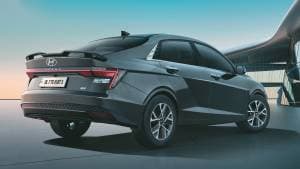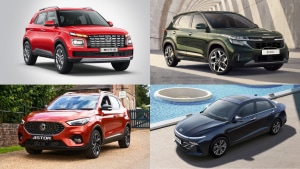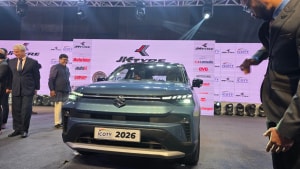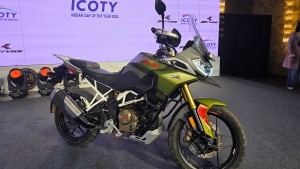2018 Hyundai Verna 1.6D diesel first drive review
Hyundai is seeming more European and less Korean in recent times. Their designs are cleaning up well, the cabins are dressing up in a more sophisticated manner, the materials feel premium across various price points and now all their cars resemble each other a bit too closely - much like the Volkswagens. That isn't necessarily a bad thing and the Verna, for one, certainly benefits from that approach.
Design
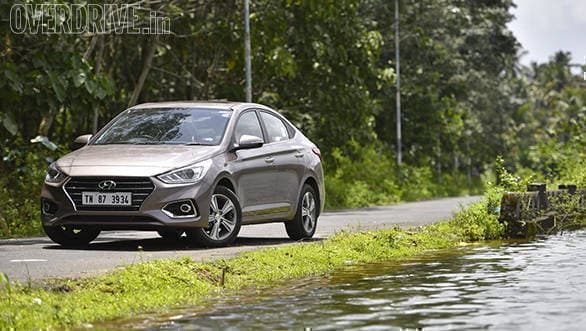
The outgoing Verna was a tad too long in the tooth, but the fluidic design language did make an impact and even the competition was forced to respond with radical designs. I personally believe that the design didn't age too well, and perhaps the designers at Hyundai resonate with my thoughts. The new Verna incorporates cleaner lines, has less creases and uses more angular cuts for a chiselled look. The face looks handsome and sharp. I prefer the older design of Hyundai's hexagonal grille, and the new one draws attention away from the good-looking features like the sleek headlamps or the detailed fog lamp housings. There is no denying that the cascading grille with its chrome treatment looks more premium though. The headlamps have LED DRLs shaped similar to those on the Elantra. Ditto for the detailing of the tail lights and the rear bumper. Look at the side profile though and you will notice that the Verna has a tallboy stance compared to the sporty low-slung poise of the Elantra. The sharp shoulder line and detailing of the doors looks classy, while the headlights and tail lights extending sharply into the bodywork add a sense of motion to the design. The outgoing Verna started the buzz about the diamond-cut finish for the alloy wheels and the new ones get it too, albeit with a new design.
Cabin, features and practicality
The design of the cabin isn't reminiscent of the Elantra though. It takes the Hyundai's typical black and beige approach for the dashboard fascia and the upholstery, while the layout of the dashboard elements is quite similar to the other cars in the family like the Creta. I would have preferred an all-black theme for the cabin. That not only works better for our dusty conditions, but also ages gracefully compared to what we have seen on typical Hyundai cabins. The gloss black inserts are fingerprint magnets as expected, but the satin-finished bezels around the infotainment and AC vents look upmarket. The materials feel premium on all touch points and the cabin doesn't feel too plasticky unlike some of its rivals.
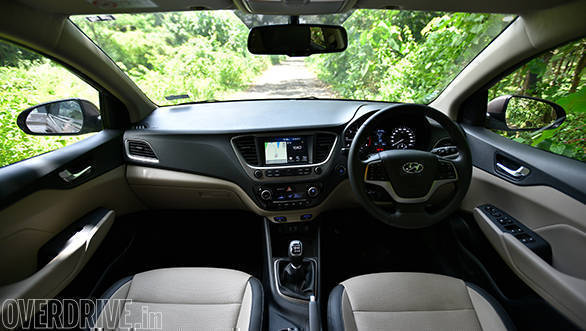 The cabin looks more upmarket than before in the new Hyundai
The cabin looks more upmarket than before in the new Hyundai
The front seats of the new Verna are quite accommodating and now come with a ventilated function. The latter complements a well-tuned automatic air-conditioning system which worked flawlessly in the hot and humid weather of Kochi during our tests. Cooling at the rear is quite effective too. The rear bench offers decent space and under-thigh support, but doesn't feel as roomy as the backseat of the Ciaz. Like the Ciaz though, the Verna too gets a rear windshield blind and it's manually operated. The cushioning of the seats is slightly on the firmer side and that should work well for long journeys. The glass house is generously large and along with the sunroof, it gives the cabin an airy feel.
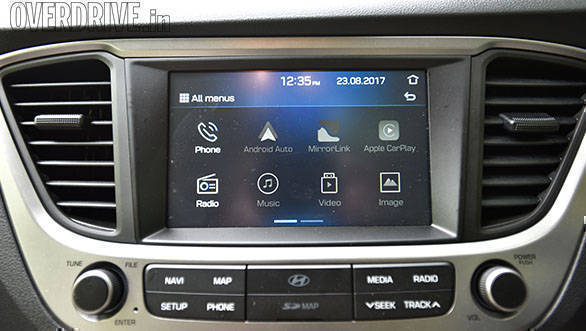 The 7.0-inch touchscreen infotainment boasts Apple CarPlay, Android Auto and Mirror Link
The 7.0-inch touchscreen infotainment boasts Apple CarPlay, Android Auto and Mirror Link
The top-spec trims come with a 7-inch touchscreen infotainment system similar to the Creta. It gets Apple CarPlay, Android Auto, Mirror Link and satellite navigation. Hyundai has provided three USB ports in the cabin, one of which is mated to the infotainment's audio interface, while the other two are meant for charging compatible USB devices.
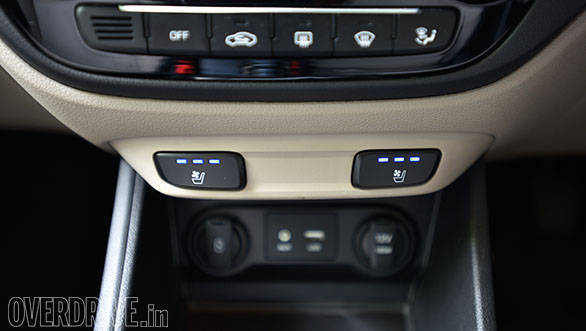
There are plenty of storage spaces inside the cabin too, comprising of the cooled glove box, two cupholders each in the tunnel console, and the rear armrest and 1l bottle holders in all door pockets. The storage spaces and all the switches fall easily at hand. At 480l, the Verna's boot isn't the best in class but is designed well and has easy accessibility. The bootlid has an automatic hands-free opening operation and needs you to simply walk close to it with the key in your pocket. I have used it extensively on the Elantra and it's a good feature to have for shopaholics.
Safety
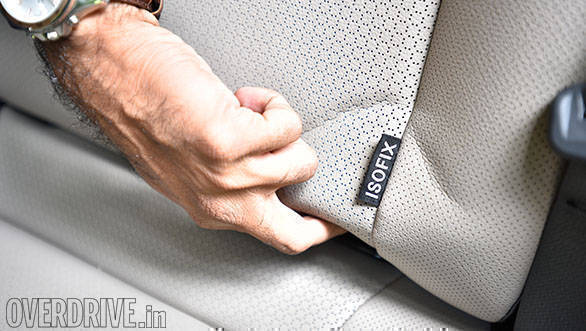
Though there are no crash safety ratings out for this car yet, Hyundai promises that the Verna is now safer than before with more than 50 per cent of the chassis structure incorporating high-strength steel. The top-spec trims are being offered with up to six airbags, while two front airbags, anti-lock brakes and Isofix child seat anchorages are a standard fit across the range. The seats also get adjustable head restraints all around.
Engine, ride and handling
The new Verna chucks the 1.4l petrol/diesel motor from the model it replaces and continues with a 1.6l 4-cylinder configuration for its petrol and diesel engine options. Both the engines can be paired with a 6-speed automatic or manual transmission, and the diesel manual is what we got our hands on for this review. Crank it up and you will be reminded on how refined Hyundai's new-age diesel cars feel. Thanks to the sound deadening materials, the engine sounds quite silent at idling speeds and only becomes a tiny bit noisy past the 3,500rpm mark. With a class-leading output of 128PS and 260Nm, I don't need a Vbox to tell you that Verna will be the quickest of the lot like all of its predecessors. Where it matters in the real world though is in the way it can pull overtakes or cruise on the highway. You can happily be in the third or fourth gear for most urban duties, and to add to the convenience, the clutch pedal is now lighter and has lost its springy nature. On the highway, the Verna will cruise at 100kmph at about 2,000rpm. That should also give it excellent fuel economy despite the high power and torque outputs.
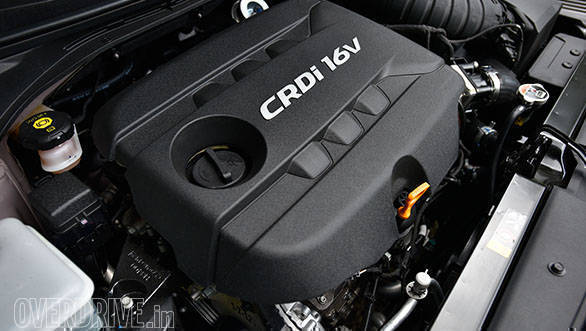
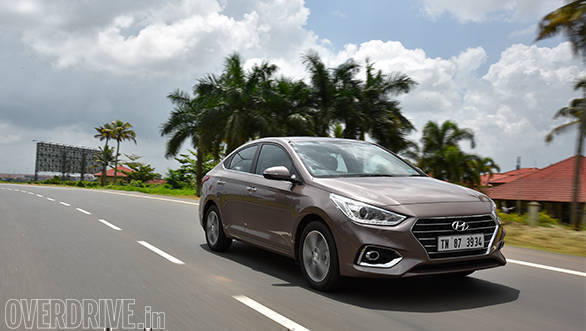
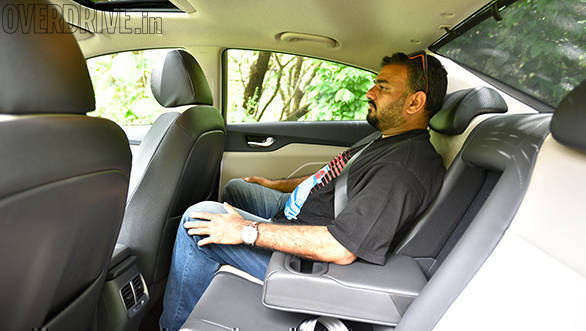
Hyundai has been improving their driving dynamics lately and the Verna is testimony to the fact. Unlike the outgoing model, which had a floaty feel at highway speeds, the new one feels significantly more sure-footed on the highway as well as around the twisties. There is a some vertical movement around switchbacks, but it reduces by a fair bit with a full house. The ride quality is excellent and it again reminds me of the Elantra with how silent the suspension is over potholes, ruts and joints. Tyre noise creeps into the cabin at about 90kmph on tarmac and 70kmph on concrete, while wind noise is audible past 120kmph. The tyres have a decent grip for regular use and complement the progressive braking of the Verna quite well. The steering feel and feedback has been improved too, but the movement has an elastic feel to it at slower speeds as the wheel seems eager to return to its centre position.
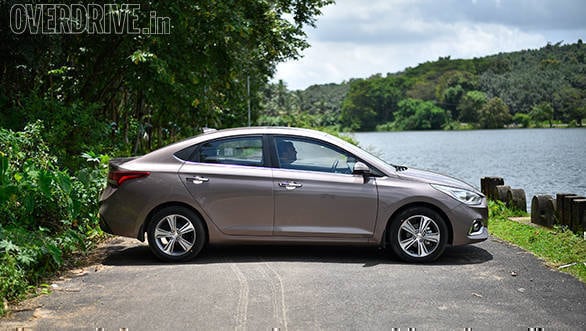
Overall, the Verna is easy to drive and feels convenient in the city and on the highway. It isn't an enthusiast's driver, but I personally wouldn't mind living with a Verna anymore.
Verdict

The Verna reminds me of the new Elantra in more ways than one and that isn't a bad thing. The elder sibling has won all the comparisons we put her through, and the Verna replicates almost all of the virtues that helped the Elantra win. Furthermore, Hyundai has managed to price and package the Verna rather well despite the absence of the entry-level 1.4l engines and the inclusion of new-generation safety features and creature comforts. As a package then, the Verna should be able to breathe fresh air into a segment that is fighting for existence in the wake of the compact crossovers and SUVs.
Images: Anis Shaikh
Starts Rs 9.31 Lakhs
1493cc
Automatic
115
250
-NA-
